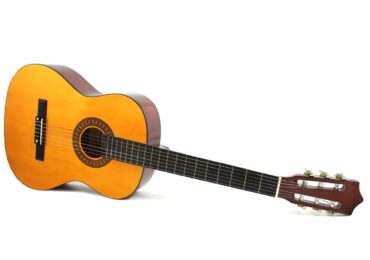Key Takeaways
- Bass guitars form the backbone of most musical compositions.
- Understanding bass guitar tabs is crucial for beginners.
- Practice and knowledge of music theory enhance bass-playing skills.
- Explore different styles and techniques to refine your sound.
The Significance of Bass Guitars in Music
The deep sounds and steady beat of the bass guitar play a role in music bands by blending rhythm and melody to connect percussion with harmony of aiming for the limelight like some instruments do; the bass guitar flourishes in a supporting capacity that enhances the overall musical journey for listeners and performers alike beginners can effortlessly learn well known tunes using bass tabs that offer an uncomplicated guide for finger positions and fret placements this method makes music education more inclusive as it enables individuals to jam along, with tracks or craft their own bass riffs. Bass guitars are frequently. They play a role in music by enabling other instruments to join in with melodies and rhythms.

Decoding Bass Guitar Tabs for Beginners
Playing bass guitar tabs is like following a roadmap that leads aspiring musicians into exciting territories of music exploration They serve as a common language for simplifying intricate musical concepts into easy to understand instructions When you start playing your first notes using tabs the excitement of creating familiar tunes fosters a strong bond, between the musician and their instrument For newcomers who may feel intimidated by conventional sheet music bass tabs remove unnecessary complications and enable instant interaction with music By practicing with sheets (tabs) beginners expand their range of skills and develop crucial finger agility and coordination, in rhythm playing music styles. These abilities form a base for their musical endeavors. Be it through self teaching or formal training. To thrive and progress. Additionally as musicians become more at ease they discover tabs to be an asset that assists them in transitioning from melodies to complex jazz chord progressions.
Essential Techniques for Beginner Bassists
Starting to delve into playing the bass involves learning a techniques at the foundation level that might appear straightforward initially but are crucial, for building a solid musical and technical base:
- Plucking and Fingering: Start by using your index and middle fingers in a way to create a transition of tones. This technique is key, to improving your skills on the instrument! As you become more comfortable and skilled with this method you can explore incorporating slap and pop techniques into your playing to add dynamics and depth to your music composition.
- Learning Scales: Understanding scales in music is essential for grasping bass lines and improvisation techniques as they form the foundation for exploring tonal concepts in a structured manner that paves the way for elevated improvisational skills down the road.
- Chord Progressions: Mastering chord progressions offers a glimpse into the structure and harmony of songs serving as elements in numerous musical compositions and facilitating collaboration, with fellow musicians.
These methods improve one’s skills and creative expression to help newcomers develop their style and musical persona.
The Importance of Music Theory in Bass Playing
The excitement of starting an exploration by ear or even just following tabs is truly captivating. However incorporating music theory into your learning brings advantages. Music theory goes beyond memorization ; it offers a comprehension of how music is created and operates. By learning music theory thoroughly understanding its principles and concepts musicians acquire the skills to change the key of music pieces craft harmonies. Explore intricate musical compositions further. This knowledge turns intervals, key signatures and chord progressions into tools that enrich dialogues with depth and meaning. Theoretical understanding enhances abilities and empowers musicians to embark on original musical projects confidently.
Different Bass Playing Styles
Playing the bass guitar involves styles that come with their set of challenges and creative possibilities for expression. The techniques used add a texture to your music repertoire. Captivate the audience. Playing the bass in a pizzicato style creates a sound perfect for ballads; on the flip side the lively slap technique adds a dynamic funk vibe that gets the crowd moving and grooving with energy! When you go for fingerstyle playing on the bass guitar it opens up opportunities for bass lines that work well in music arrangements too! Trying out these playing styles keeps things interesting. Helps you adapt smoothly to various music genres while uncovering a world of creative options!
Dedicated Practice: The Key to Mastery
Great musicianship develops through committed practice sessions over time with a schedule in place to facilitate gradual improvement towards mastery. The key lies not much in the duration of practice but in the depth. Focused attention given during each practice session. Engaging in practice strengthens muscle memory. Improves the ease and fluidity of finger movements, on the bass guitar. It also boosts precision in timing and enhances both finger strength and tonal clarity. As each scale is honed and every song is conquered the bond with the bass guitar grows stronger driving development and technical progress forward.